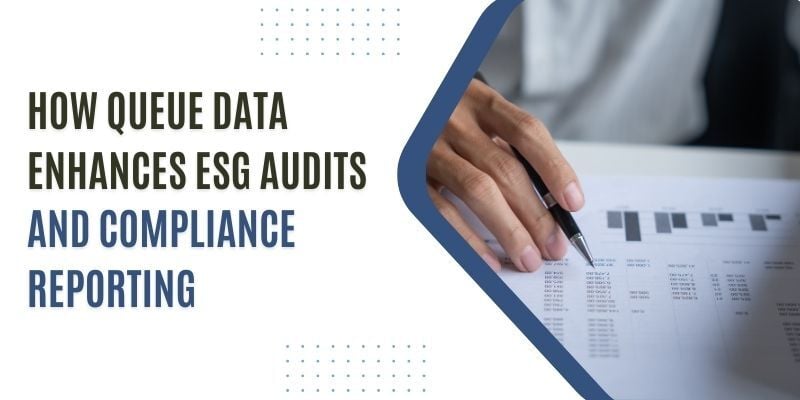In queue management, the “First In, First Out” Queue method or FIFO queuing follows a simple rule: the first person or item to join the line is the first to be served. Imagine waiting in line at a store – the person who arrives first gets served before those who come later.
This approach ensures fairness and order. It’s like arranging books on a shelf – the one you place first is the one you’ll pick up first. FIFO is widely used in banks, restaurants, and computer systems. It helps keep things organized and prevents confusion.
So, next time you wait in line, remember the FIFO rule – it’s a straightforward way to manage queues and treat everyone fairly. If you want to learn more, then explore our write-up further.
What is (FIFO) First In, First Out Queue?
A First In, First Out queue, often referred to as a FIFO queue, is a fundamental concept in queue management systems. Picture standing in line at a theme park – the first person to arrive is the first to experience the ride. This same principle applies to a FIFO queue.
In the first in, first out queue, the first item added to the queue is the first to be removed. It’s like stacking pots in a cupboard – the book at the bottom, or the one added first, is the one you’ll pick up first. This orderly approach ensures fairness: the earliest request gets fulfilled before others.
FIFO queues are commonly used in various scenarios. For instance, in online ticketing systems, the first person to enter the queue gets the first available tickets. Similarly, in computing, data items that enter a FIFO queue are processed in the same order they’re received.
How exactly does FIFO Queuing work?
FIFO queuing, which stands for “First In, First Out,” in queue management is like getting in line for your daily errands or at the grocery store. The first person in line is the first to be served. Here’s how it works:
- Getting in Line: Just like people waiting in line, a FIFO queue starts when people or things join the line. It could be customers waiting to buy tickets, items waiting for processing, or even requests waiting for attention.
- Virtual Queuing: Nowadays, with technology, lines can be virtual, too. Think of it as a line that you can’t see – like reserving a spot online to buy concert tickets.
- Ticket Dispenser: Imagine a ticket dispenser at a health counter. The first person takes a ticket with the number 1, the second gets the number 2, and so on. In a FIFO queue, the first item to arrive gets a “ticket” with the lowest number.
- Serving in Order: Just like at the health counter, the person with ticket number 1 gets served first. In a FIFO queue, the item with the lowest “ticket” or the one that arrived first gets attention first.
- Fairness: FIFO is fair because it follows the order of arrival. It’s like– the person who came first gets served first.
A ” First In, First Out” Queue is a neat and organized way to manage lines, requests, or tasks. It’s like a rule that everyone agrees on – the first to join is the first to be helped. This makes things fair and easy to handle.
What are the Reasons for Using First in First Out Queuing?
Employing the First In, First Out (FIFO) queue system in business operations has several advantages and aspects contributing to its widespread adoption. This approach ensures fairness and efficient management of tasks or customers in a systematic manner.
Here’s why many businesses opt for the FIFO queuing method:
1. Maintaining fairness:
FIFO queuing adheres to a fundamental principle – the first entity to join the queue is served first. Just like waiting in line for a movie ticket, this fairness instills a sense of order and impartiality.
Customers appreciate this equitable treatment, as it eliminates confusion and disputes over preferential treatment.
2. Organized Workflow:
In a bustling business environment, maintaining order is crucial. FIFO queuing promotes an organized workflow by addressing tasks or customers in the sequence in which they appear.
This streamlined approach minimizes chaos and ensures that every task or customer gets noticed due to disorder.
3. Customer Satisfaction:
Businesses prioritize customer satisfaction, and FIFO queuing plays a role here. When customers are served based on their arrival time, it showcases the company’s commitment to delivering services in a systematic and fair manner.
Satisfied customers are more likely to provide positive feedback and return for future interactions.
4. Improved Efficiency:
FIFO queuing enhances operational efficiency by preventing bottlenecks and delays. Tasks are processed in the order they arrive, reducing the likelihood of critical tasks getting stuck behind less urgent ones.
This efficiency results in timely task completion and an overall smoother workflow.
5. Easy Implementation:
The queue FIFO method is straightforward to implement, making it an attractive choice for businesses of all sizes. Whether managing a retail store, a call center, or an online service platform, incorporating FIFO is relatively simple and requires minimal training for employees.
In a business-to-business context, employing FIFO queuing can lead to better task management, enhanced customer experiences, and improved efficiency.
It aligns with the principles of fair play and prioritization while also allowing businesses to capitalize on positive customer feedback. By adopting FIFO queuing, companies can create a structured and organized environment that benefits their internal operations and client relationships.
Examples of First-in-First-Out (FIFO) Queuing in Daily life

In our daily routines, we encounter the “First In, First Out” (FIFO) queuing principle more often than we might realize. This straightforward concept plays a significant role in keeping things organized and fair. Here are a few instances where FIFO queuing comes into play:
- Supermarket Checkout: When you’re waiting in line to pay at the supermarket, the cashier serves the customer who arrived first. It ensures everyone gets their turn somewhat and avoids confusion.
- Cafeteria Lunch Line: In the cafeteria, the students who get in line first are the ones to receive their lunch first. FIFO queuing prevents arguments and helps the lunch process run smoothly.
- Print Queue: When you send multiple documents to a printer, they are usually processed in the order they were sent. The first document you send will be the first one to be printed (unless there are issues).
- Fast Food Drive-Thru: At a fast-food drive-thru, the cars are served based on their arrival order. The vehicle that joins the line first is the one that gets its order taken and served first, making the process efficient and equitable. The same principle applies to the self-service kiosk orders in fast food chains.
- Online Customer Support Chat: When you’re seeking assistance through an online chat with customer support, your messages are often handled in the order they were sent. The first inquiry you made is typically the first one addressed, maintaining a fair and organized support process.
These examples demonstrate how the FIFO queuing principle is applied in various everyday situations, ensuring fairness and orderly progression.
First-In, First-Out in Queue Management – FAQs
Is Queue A LIFO Or FIFO?
A queue is generally designed to be FIFO, which stands for “First In, First Out.” This means that the first item or task that enters the queue will be the first one to be processed or served.
Unlike LIFO (Last In, First Out), where the most recent item is processed first, a queue’s primary characteristic is its adherence to the order of entry.
Is FIFO The Same As Queue?
Yes, FIFO (First In, First Out) is a fundamental characteristic of a queue. A queue is a data structure that follows the FIFO principle. Items or tasks added to the queue are processed in the same order they arrive, ensuring fairness and orderly management.
What Is the FIFO Principle In Queue Management?
The FIFO principle in queue management refers to the practice of processing items or tasks in the sequence they entered the queue. The first item to arrive is the first one to be handled, creating an organized and equitable approach.
Conclusion
To sum it up, the First In, First Out queue principle is a foundational concept used widely. It ensures tasks or items are managed according to their appearance, creating fairness and organization.
Just as the first person in a line gets served first, FIFO maintains this sequence in various settings, from business operations to customer service. This approach minimizes confusion and enhances efficiency by addressing things based on their arrival time.
Whether it’s processing data, serving customers, or managing tasks, FIFO’s systematic approach streamlines operations, upholding the principle of prioritizing the earliest arrival.
Embracing FIFO queuing in various contexts promotes a structured and orderly workflow, which is beneficial for effective business management.
BOOK A FREE DEMO





